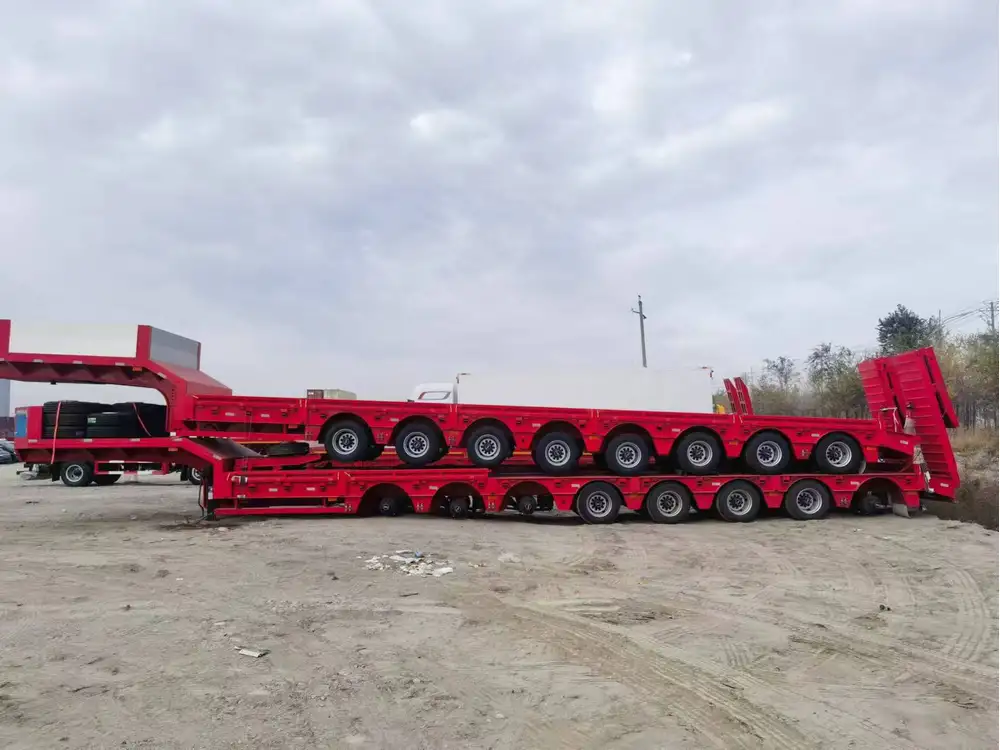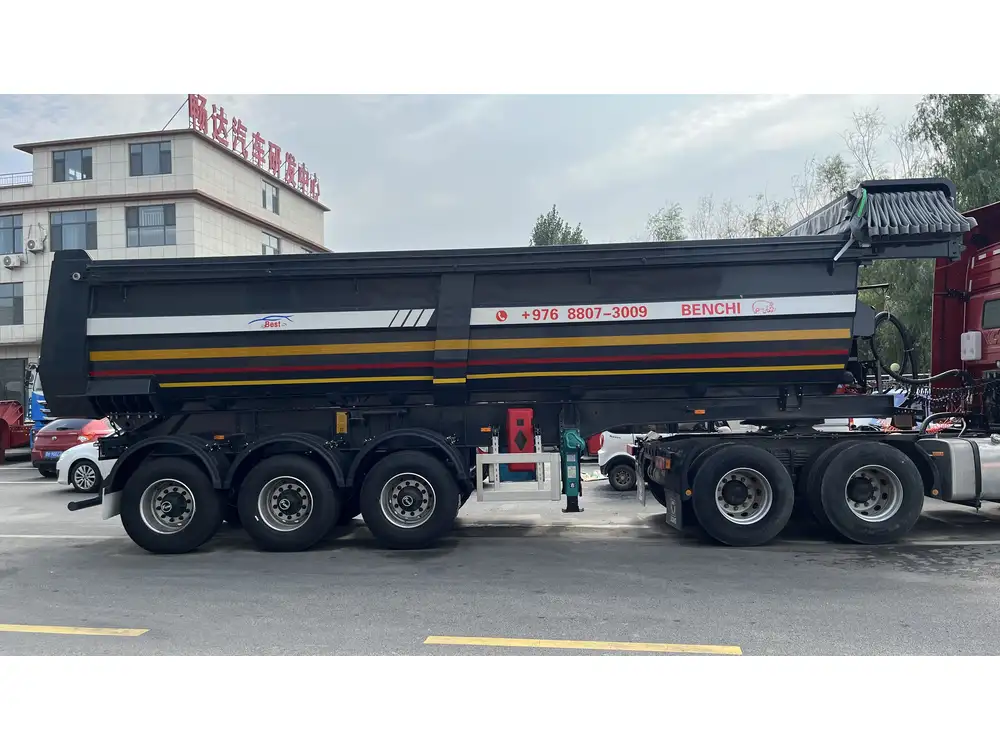Introduction to Semi-Trailer Fuel Capacity
When it comes to the operation of semi-trailers within the freight industry, one pivotal aspect that every trucking company needs to grasp is fuel capacity. Knowing how many gallons of fuel a semi can hold is essential for logistics planning, cost management, and operational efficiency. Fuel tanks in semi-trailers are not only structured for utility but have a significant impact on routing, refueling strategies, and overall performance. In this article, we delve deep into the essential information regarding the gallons of fuel that a semi-trailer can accommodate, the factors influencing fuel capacity, and considerations for maximizing efficiency.
Semi-Trailer Fuel Tank Sizes

Typical Fuel Tank Capacities
Semi-trailer fuel tanks typically range in size from 100 to 300 gallons. The exact capacity can vary significantly depending on the manufacturer, model, and intended use of the vehicle. Here, we provide a breakdown of common tank sizes:
| Tank Size (Gallons) | Common Usage | Manufacturer Examples |
|---|---|---|
| 100-150 | Local deliveries | Freightliner, Peterbilt |
| 150-200 | Regional hauling | Kenworth, Volvo |
| 200-300 | Long-haul operations | Mack, International |
Factors Influencing Fuel Tank Size
Manufacturer Specifications: Different manufacturers have different standards for fuel tank sizes. For example, Freightliner models, often designed for fuel efficiency, might have larger tanks compared to other brands to support long-haul distances.
Vehicle Configuration: The design of the semi-trailer, including the layout and weight distribution requirements, impacts the total fuel capacity. Heavy-duty models may include space for larger tanks to accommodate the increased energy needs.
Regulatory Compliance: Various regulations, including those concerning vehicle weight and emissions standards, dictate optimal tank sizes to ensure compliance while maximizing fuel efficiency.
Driving Range: The typical routes serviced by a truck can also determine fuel tank capacity. Long-haul routes necessitate larger fuel tanks to reduce the frequency of stops for refueling.
Maximum Fuel Capacity Options
While many semi-trailers can efficiently operate with tank sizes between 100 to 300 gallons, certain configurations allow for higher capacities. Some trucks are equipped with dual fuel tanks, enabling them to hold up to 400 gallons or more. This option is favorable for maximizing operational range between fuel stops, thus enhancing productivity.
| Dual Tank Configuration | Total Capacity (Gallons) |
|---|---|
| Standard dual tank setup | 300-400 |
| Customized options | Up to 600 |

Common Semi-Trailer Models and Their Fuel Capacities
Understanding specific models is crucial for manufacturers and fleet managers. Below is a comparative overview of popular semi-trailer models and their respective fuel tank capacities:
| Model | Fuel Capacity | Fuel Type | Purpose |
|---|---|---|---|
| Freightliner Cascadia | 120-200 | Diesel | Long-haul transport |
| Kenworth T680 | 150-250 | Diesel | Regional and long-haul transport |
| Volvo VNL | 200-300 | Diesel | Long-haul transport |
| Peterbilt 579 | 100-350 | Diesel | Versatile transport |
Calculating Distance per Gallon
The efficiency of a semi-trailer is also affected by its fuel consumption, which is typically measured in miles per gallon (MPG). The average semi-trailer averages about 6-8 MPG, although this can vary based on loading weight, road conditions, and driving habits.
Example Calculation
To understand the distance range based on capacity, we can use a simple formula:
- Semi-Trailer Fuel Capacity: 200 gallons
- MPG: 7 miles per gallon
Total Driving Range = Fuel Capacity × MPG
Total Driving Range = 200 gallons × 7 MPG = 1400 miles
This calculation emphasizes the importance of maximizing fuel tank size in relation to operational range, especially for long-haul routes.

Importance of Fuel Efficiency
Factors Influencing Fuel Efficiency
Beyond tank capacity, it is equally critical to understand how various operational factors contribute to fuel economy. Here are some key elements that influence fuel efficiency in semi-trailers:
Weight Management: Overloading can significantly decrease MPG. Maintaining load integrity ensures optimal performance.
Tire Management: Proper tire pressure and tread maintenance can enhance fuel efficiency. Under-inflated tires can lead to increased rolling resistance.
Aerodynamic Design: Many modern semi-trailers are designed with aerodynamics in mind, reducing drag and improving fuel efficiency. Trailer skirts, side extenders, and improved cab designs contribute to better performance.
Driving Habits: Smooth acceleration and braking techniques can decrease fuel consumption substantially. Driver training programs focused on fuel-efficient driving can considerably bolster operational efficiency.
Strategies for Maximal Fuel Efficiency
Regular Maintenance: Consistent maintenance optimizes engine performance, ensuring that fuel is used efficiently.
Route Optimization: Using technology to strategically plan routes can help in minimizing distance and time, thus affecting fuel usage.
Load Optimization: Consolidating shipments or sharing loads isn’t just practical but can significantly enhance fuel economy as well.

The Growing Importance of Alternative Fuel Options
As the industry embraces sustainability, exploring alternative fuel options may become essential. Manufacturers and fleet operators are now more than ever considering options such as:
Compressed Natural Gas (CNG): Offers cleaner emissions and is highly efficient, although requires different fueling infrastructure.
Biodiesel: A renewable fuel option that may help in reducing dependency on traditional fossil fuels.
Electric Semis: Although still in early adoption stages, electric semi-trailers are gaining traction, aiming for zero emissions and lower operational costs in the long run.
Conclusion: Navigating Fuel Needs for Semi-Trailers
Understanding the intricacies of fuel capacity in semi-trailers is imperative for any trucking operation. By taking into account fuel tank sizes, consumption rates, efficiency strategies, and trends in alternative fuels, fleet managers can make informed decisions that enhance their logistical operations.
Incorporating best practices in fuel management promises to yield benefits ranging from cost savings to heightened operational efficiency. As we continue to explore advanced trucking technologies, maintaining awareness of fuel consumption trends and ongoing innovations in vehicle design will be crucial in adapting to the dynamic landscape of the trucking industry.
Equipped with this comprehensive knowledge, it is now time to assess your semi-trailer fleet’s performance, align your operational strategies, and implement the measures that can keep your fleet running efficiently and sustainably for years to come.



